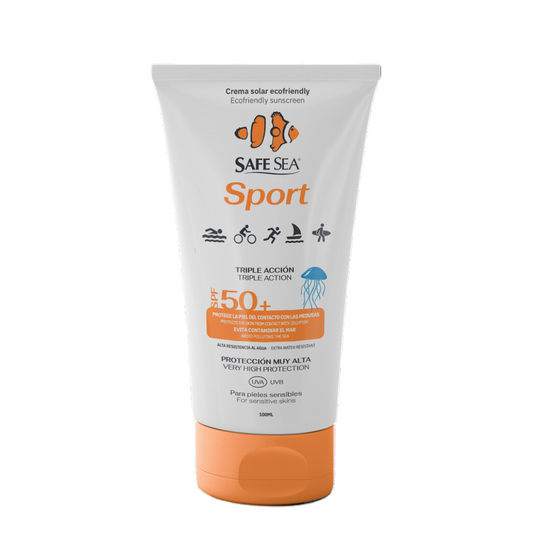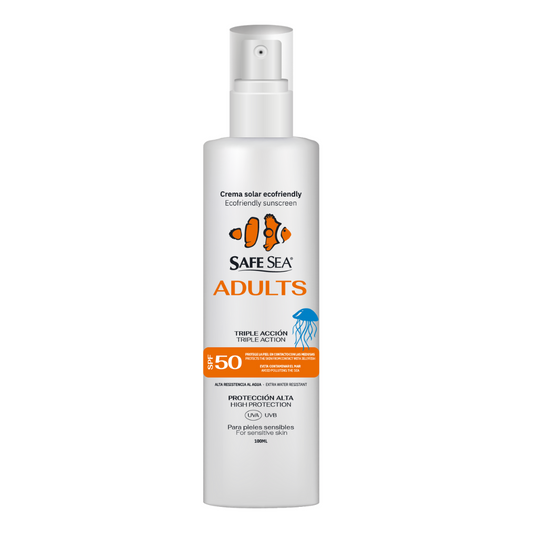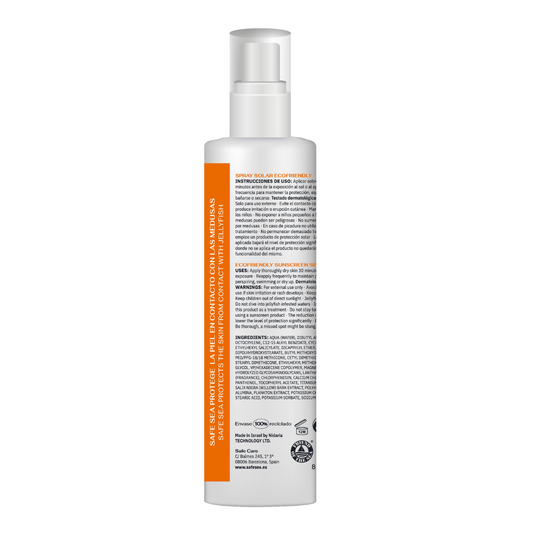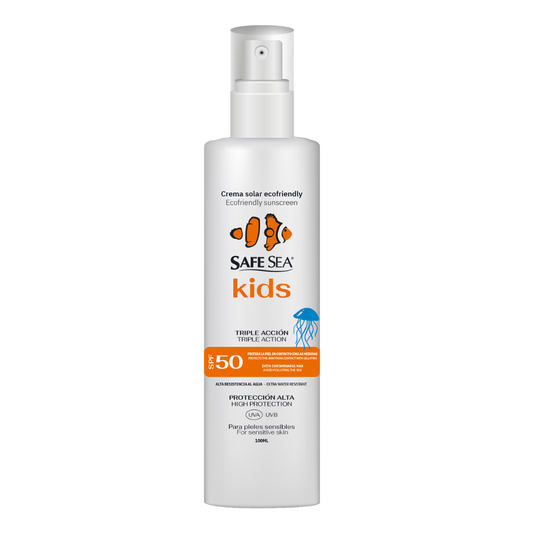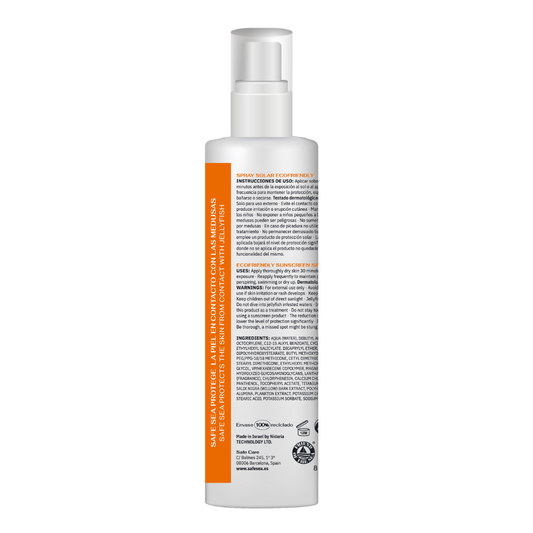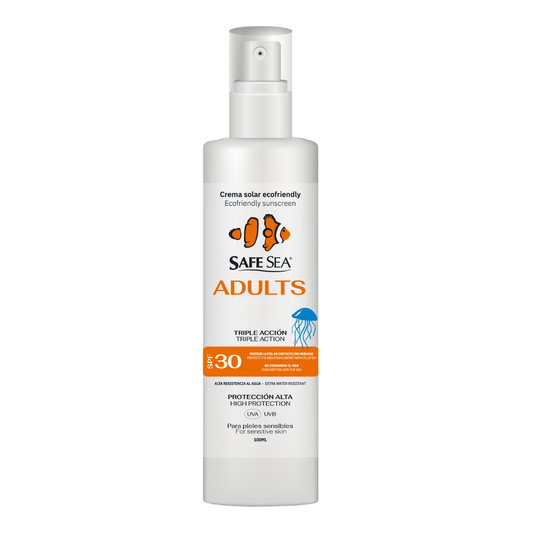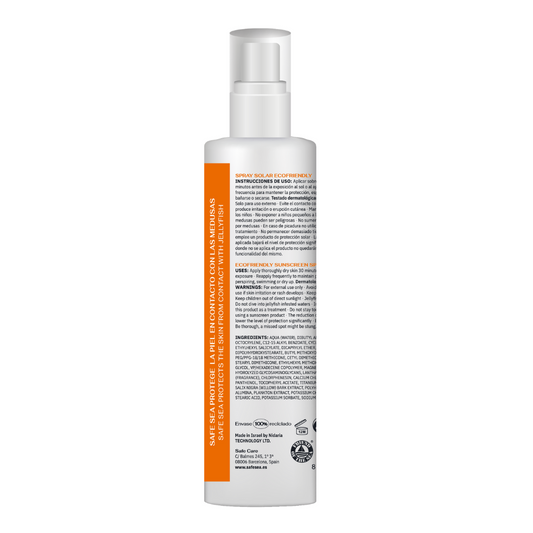Jellyfish stings are one of our greatest fears during the vacations. These little gelatinous animals arrive on the Mediterranean coast with the rise in water temperature and keep us company until the summer is over! If you do not want them to ruin your days of rest and beach, pay attention to the following indications: we explain the causes, symptoms and the only method of prevention against jellyfish stings. Keep reading!
Causes of jellyfish sting
Surely at some point you have asked yourself this question: Why and how do jellyfish sting? Although a priori it may seem strange to you, the jellyfish sting is the result of a defense mechanism: in each jellyfish tentacle there are millions of stinging cells, which it fires when it feels threatened. Each of these cells (known as cnidoblasts) contains a coiled filament ending in a dart and potent toxins.
These stinging cells are activated upon physical contact with human skin, and fire their dart. They inject their venom into the skin, generating pain, rashes and redness.
Symptoms of jellyfish stings

In the Mediterranean Sea there are several species of jellyfish, such as: Live water (Rhizostoma pulmo)
The aqua viva, also known as aguamala jellyfish, is one of the largest jellyfish living in the Mediterranean Sea. As an adult, its white body with blue-violet lobes on its 'umbrella' can reach 100 centimeters in width. Also noteworthy are the eight tentacles that arise from the oral area of the animal.
This species of jellyfish can cause serious skin inflammations. Direct contact with the 'victim' is not necessary for this, as when present in abundance they can generate indirect inflammations.
Fried egg jellyfish(Cotylorhiza tuberculata)
The fried egg jellyfish is not very large, reaching between 25 and 35 in diameter. Its oral arms with numerous buttoned warts, which can be white, blue or violet in color, stand out. As their tentacles are relatively short, irritations caused by these jellyfish are less frequent and milder.
Moon jellyfish(Aurelia aurita)
Luna jellyfish are the most harmless of all types of jellyfish that inhabit the Mediterranean Sea. This species is of medium size, with a diameter of 20 to 25 centimeters in its dish-shaped umbrella. One of its most striking characteristics is that its arms are longer than its tentacles.
Luminescent jellyfish(Pelagia noctiluca)
The luminescent jellyfish is transparent like the moon jellyfish, but its color is mostly pink or slightly reddish. As its name suggests, its body glows in the dark. They live in the deep regions of the Atlantic Ocean and the Mediterranean Sea. During the summer, they approach coastal areas with the help of the wind. Considering that their sting is painful, and can cause severe skin inflammations, it is necessary to be very careful.
Portuguese Caravel(Physalia physalis)
This is one of the most feared species among all types of jellyfish that inhabit the Mediterranean Sea. These animals contain a venom that can be lethal in certain doses.
How to prevent jellyfish stings
The only method of preventing jellyfish stings is our Safe Sea sunscreens, whose formula acts as an inhibitor against the attack of these animals. The quality of Safe Sea as a sunscreen and its effectiveness in inhibiting jellyfish stings is internationally proven. Thousands of swimmers know, and have proven, that it is an aid in competition, leisure and professional use. The sting inhibition by this sunscreen is based on preventing the activation of the nematocysts of the jellyfish (darts). And it is based on the chemical properties of the mucous lining of clownfish.
Clownfish: an example to follow
The clownfish lives among sea anemones. They have stinging nematocysts similar to those of jellyfish. But their mucous coating prevents them from being stung by sea anemones. Nematocysts require both chemical and tactile stimulation to fire. Evolutionarily, it makes sense for jellyfish or sea anemones not to unnecessarily discharge their nematocysts against inanimate objects or themselves. Hence, the clownfish's coating mimics that of a jellyfish and it does not suffer their stings.
How Safe Sea acts against jellyfish
Safe Sea thus prevents the nematocysts from being triggered. However, once the stingers have been triggered, Safe Sea cannot block or neutralize the sting and its venom. The inhibitor is not composed of a single chemical. It is an amalgam. Moreover, the hundreds of thousands of stinging cells function autonomously. And therefore, even with the tentacle detached from the jellyfish, they could be triggered.
In various scientific publications Safe Sea is literally recognized as an "effective jellyfish sting inhibitor. It significantly reduces the pain and skin reaction resulting from contact with the stinging cells of the jellyfish" ("Safe Sea jellyfishreport Stanford University"). In other words, the effectiveness of Safe Sea is recognized. But it hardly prevents contact in 100% of cases (i.e. 100% of the millions of autonomous stinging cells in its tentacles). And that is why the product's package insert recommends "not to bathe in jellyfish-infested waters".
In them, it is expressed that the inhibitory effect of Safe Sea, obtained a reduction of > 80 % in jellyfish stings under real conditions in a field test.

Also in extreme competition conditions, Safe Sea has some conditions indicated. Like all sun creams, after 80' of aquatic activity, it may lose effectiveness and requires replenishment. It should therefore be taken into account by competitors in open water marathon events (OWS). In this scenario, it is recommended not to mix with lanolin or petroleum jelly. Nor any other protectant so as not to interfere with its protective action.
The best proof of its effectiveness is to ask an experienced long distance swimmer if there is a difference between swimming with Safe Sea and without it.


